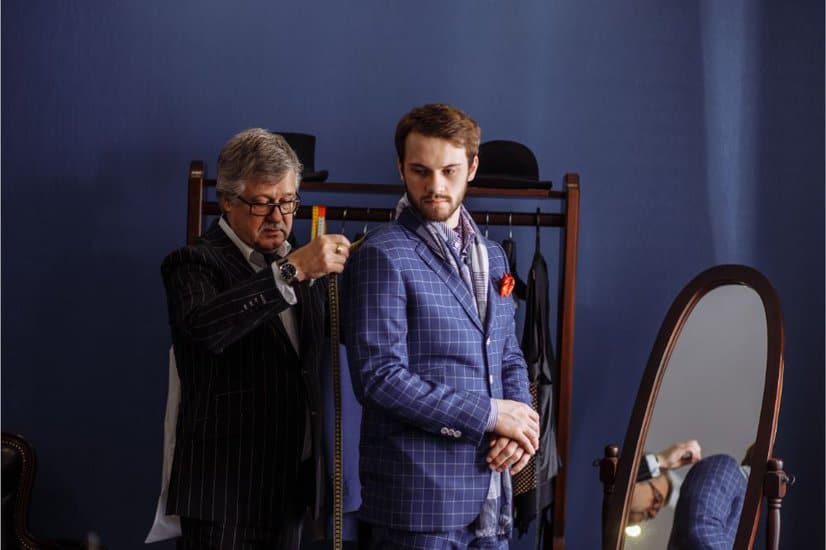One of the core aspects of formal and classic men’s apparel is the blazer fit. It is of fundamental importance because usually, the blazer shapes а man’s posture which is one of the first things people notice. Owning a blazer the fits perfectly is an advantage but not always an easy task.Тhere are some details which you should be very careful about and if you ignore them, rest assured – they will compromise your looks.
This post will discuss basics of blazer alterations made by a tailor to ensure it’s the perfect fit.
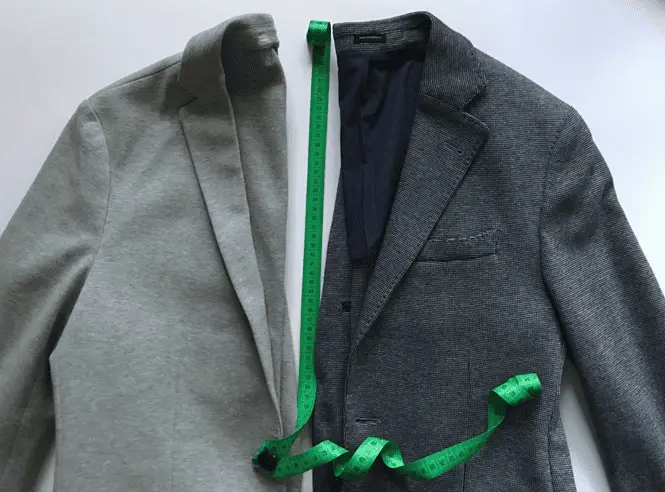
First of all, keep in mind that the idea of just having a random blazer whatsoever is not a good approach. When you go looking for one, you should know at least two things – the occasion you want to buy it for and having a general idea of what color you would like your blazer to be. Once you have figured that out, your next step would be to find a blazer that fits you properly.
Nowadays there is a large variety of blazers; however, often you cannot find exactly what you are looking for. And that’s ok as long as you are not in a hurry to buy one. But if you are, and you still cannot find the perfect blazer, what you can do is purchase a size up blazer and have it altered by a tailor.
We cannot stress enough the fact that this option is feasible with a size up blazer only. If you buy a smaller and tighter one, the tailor will not be able to help you.
So if you cannot find the perfect fit blazer, just buy a larger one and have it altered by a tailor – it is a great advantage as it will be modified as per your exact requirements and comfort.
You should keep in mind that there are two main types of components in a blazer – the ones that can be modified by a tailor and those that can’t be altered. So when you choose a size up blazer make sure that there are no big and obvious measurement deviations in terms of the garment’s areas that cannot be altered.
Blazer components that are not subject to tailoring include the following:
Check out this other similar post on garment alterations for the perfect fit & design: How To Crop a Blazer
1. Shoulder Fit
This is without a doubt the most important area you should take into consideration when choosing a blazer. Usually, when you choose a size up blazer it can be almost entirely modified by a tailor.
Shoulder fit is the only component that cannot be tailored at all. If the blazer is too small on you, the shoulder area cannot be enlarged and, if it’s bigger, it cannot be shrunk to fit you. So remember, the most important blazer area is the shoulder fit!
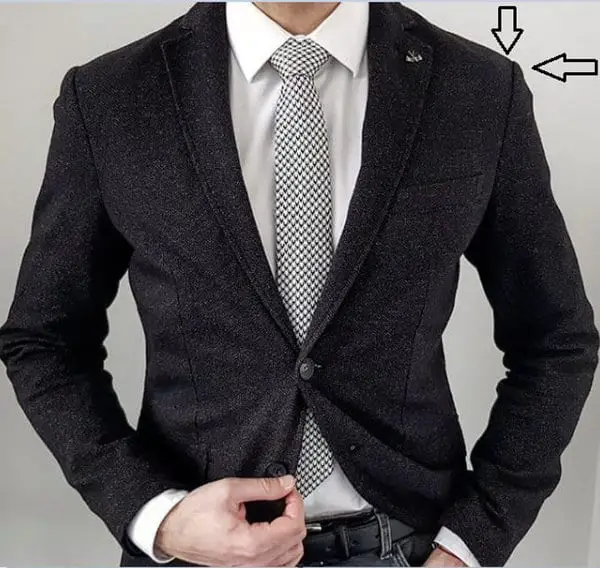
2. Number of Buttons
The next very important detail in a blazer that cannot be altered is the number of buttons on it. There are three types of blazers in terms of buttons: single buttoned, double buttoned, and three buttoned blazers. A tailor cannot remove a button from a blazer because the buttonhole on the other side would remain useless and it would look awful.
On the other hand, a tailor cannot add a button to the garment because it would completely ruin the cut and therefore would look unnatural. Soit goes without saying that after the shoulder fit you should think pretty well on the number of buttons you want to have on the blazer. Once you choose wrong – there is no turning back my friend.
3. Single vs Double Breasted Blazer
This detail is of enormous importance and you should carefully choose the blazer’s cut – single or double breasted. Those are two completely different blazer styles and as such they are not interchangeable and modifiable.
You cannot turn your single breasted blazer into a double breasted one for obvious reasons – there is less fabric in the first type. However, the opposite is also not possible reason because the cut of the double breasted blazer is very different than the single breasted one.
Single breasted blazer
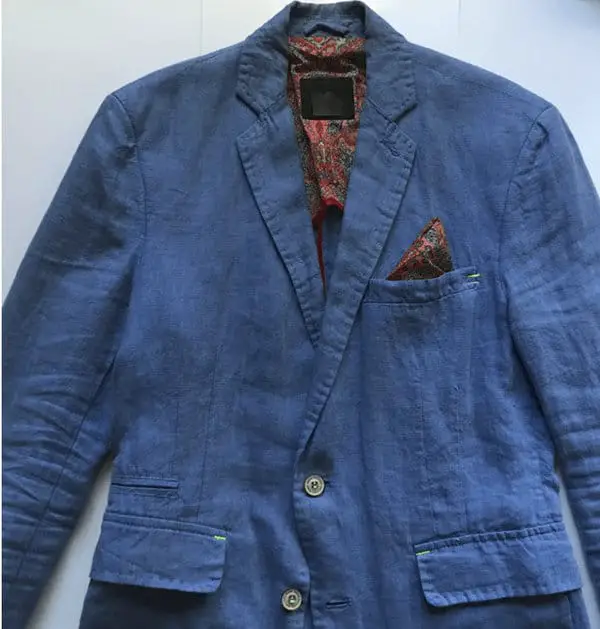
Double breasted blazer
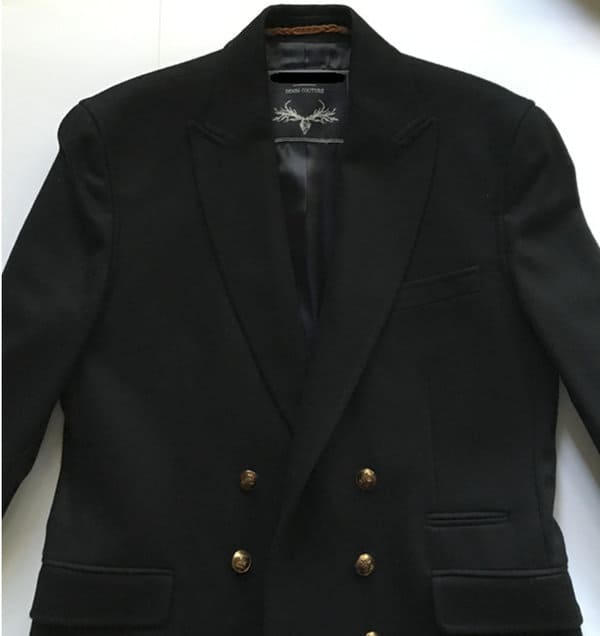
4. Sleeve Length
This blazer area can be altered, however, we decided to insert it in the non-modifiable section because sleeves are one of the most important garment components. They shape the external part of your body and are of significant importance to the entire appearance.
That’s why you need to make sure that the sleeves end just at the right spot and it is preferable that you do not make any big modifications on them in terms of length (sleeve width is a whole another story as you will see further in the article).
First thing first the correct sleeve length is just around and a bit above the wrist. A clear indication for a correct blazer sleeve length would be the end of the shirt’s sleeve. You should have a 0.5 – 1 inch (1.3 cm – 2.5 cm) shirt left visible below the end of the blazer sleeve. That’s how you know you got it right. You can see an example in the below picture.
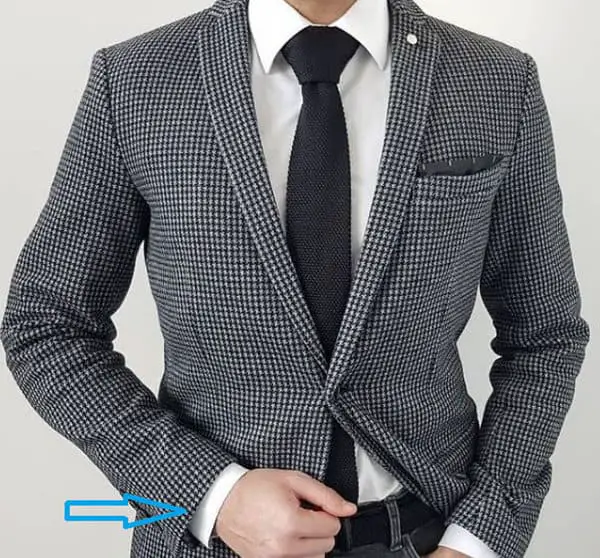
If there is no shirt visible, the blazer sleeves are too long. And if there is more than 1 inch of shirt visible, chances are that the sleeves are too short. One more clarification here – if you buy a blazer with longer sleeves, you can make them tailored shorter to fit you. If you somehow decide to buy a blazer with shorter sleeves – there is nothing you can do to make it right.
A tailor will not be able to extend them. So please, if you find a blazer that you like very much make sure that the length of the sleeves is correct or longer. If they look shorter, it would be better for you if you lay your hands off of that garment. Yes – I know it would not be an easy thing to do, but it is better this way. I promise!
Now let’s take a look at the blazer’s components which can be easily altered by a tailor.
1. Chest Fit
One of the most important fits in a blazer is the chest fit. It shapes your torso and therefore it is good to remember that the blazer should fit your body frame as close as possible but feel comfortable at the same time. A blazer too tight at the chest area is not an option. So if you cannot button up the upper button, forget about the blazer no matter how much you like it.
On the other hand, make sure to avoid blazers with too much excessive fabric around the chest. You know a blazer fits you well when you button up the higher button and there still is a two or three-finger allowance between your shirt and the blazer.
The chest fit can be easily altered by a tailor only in terms of fabric removal. If you buy a too-tight blazer, no tailor can help you to make it a good fit for you. That’s why if you happen to see a blazer that you just love and your size is too tight at the chest, just buy a size up larger and get it easily altered to your convenience.
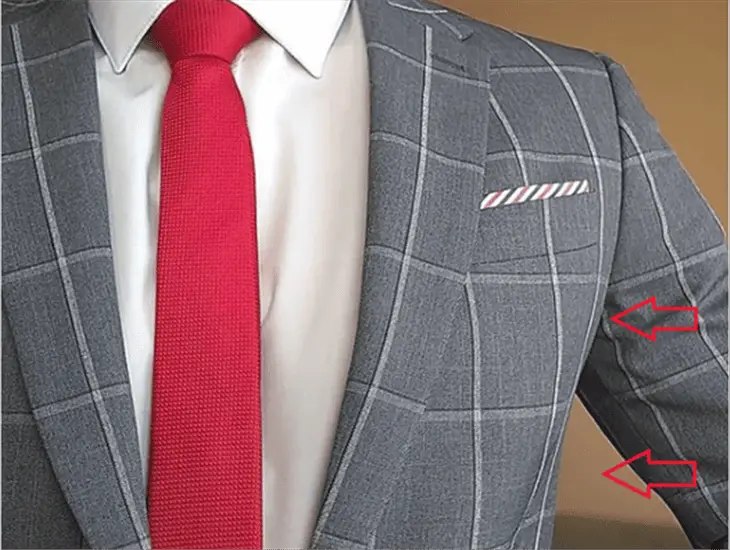
2. Waist and Torso
The waist-torso area is one of the most important components of the blazer fit as it gives your body the so-called V-shape which is a main characteristic of masculinity. The perfect blazer should be nicely shaped around your torso and waist. It should feel comfortable without being too tight or too baggy. The waist-torso area can be easily altered by a tailor – once again only in terms of fabric removal.
A strong indication of a good fit is the blazer closure – when you button up the higher button you should feel a little snug around your waist but still comfortable! The blazer closure should be perfect right around your belly button. Little wrinkles are allowed.
If the wrinkles around your waist area are bigger, the blazer is too tight for you. It’s better to choose a slightly larger blazer and have it altered. It is a simple modification every tailor can do and you get to choose the exact fit that feels most comfortable to you.
3. Blazer Closure
The blazer closure is a tiny but very important detail as it represents the front “face” of your blazer. Too tight or too loose are not preferable options because your looks will be compromised. The blazer’s closure purpose is to give your body a nice V-shape.
When you button up the higher button you should feel a little snug in the belly button area. In here, snug does not necessarily mean that the blazer is too tight. In this case, the blazer is supposed to be a bit tight.
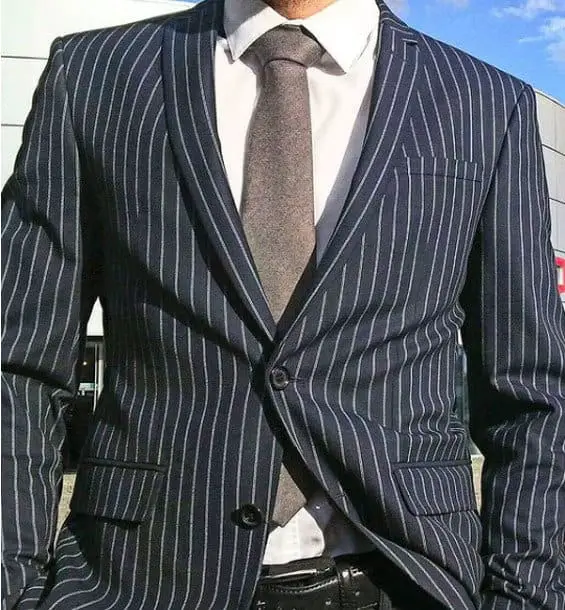
However, if the blazer forms big dimples, it is too tight for you and you might want to choose a size up.
The blazer closure can be easily modified by a tailor by moving the buttons respectively to the left – for a more relaxed fit or to the right – for a tighter fit.
Last but not least we would like to emphasize on an absolute mandatory rule when you button up your blazer.
If there are only two buttons – you only button up the higher one. No exceptions here.

If your blazer is three-buttoned, you should always button up the highest one; the one in the middle can be buttoned up sometimes – it depends on how you like it. The lowest button should never be buttoned up! So to summarize:
2 Buttoned Blazer:
higher button = always
lower button = never
===
3 Buttoned Blazer:
highest button = to your liking
button in the middle = to your liking
lowest button = never
4. Blazer Length
Blazer length is one of the most important measurements in a blazer. The importance is related to the fact that if it is longer than it has to be, the blazer can make you look short. On the other hand, if it is too short it can easily make you look funny. That’s why you should pay special attention to the blazer’s length when you are buying one.
Our personal advice is to choose longer blazers just because you can have them tailored and shortened to fit you. Of course, a good tailor would shorten the side endings of the blazer and maintain the original curves of the garment. So if you happen to go to a tailor who does not pay attention to this detail, stress this matter with no shame.
The correct blazer length is when it covers at least half of your backside – shorter than that is a no go. A blazer covering your entire backside is also an acceptable option; however, here it is up to you to decide if should be shortened a bit or not. If the blazer’s ending is quite lower than your backside, it is probably too long.
5. Sleeve Width
The width of your sleeves is the last blazer part that can be easily modified by a tailor, again in terms of fabric removal. The width of the sleeves is the final touch of a well-fitted blazer. We like blazers with tighter and comfortable sleeves. Comfort always comes first but other than that the tighter the sleeves are, the better they look.
Still if the blazer you like is too tight in this particular area, go with a size up blazer and have it tightened up. If the blazer however has too large sleeves, just avoid it as in this case even if it is altered by a tailor, it would not look good.
Last but not least – keep in mind that when choosing a blazer that the colors and patterns on it can also affect the overall outfit appearance and fit.
FAQs
Here are some frequently asked questions regarding how to find a blazer that fits you right:
How many sizes down can a blazer be altered?
A blazer can generally be altered about two sizes down from what it originally was before. While a blazer can be altered two sizes smaller, we recommend limiting yourself to blazers that are a size bigger than you are. The reason is that you want the shoulders to not be too large, which is a challenging alteration already.
What does it generally cost to alter a blazer?
Getting a blazer tailored can cost you anywhere between $20 and $90. Of course, this can go higher if it’s a more expensive tailor. Remember that just because a tailor is expensive doesn’t necessarily mean they’re the best at what they do. We also recommend being careful with cheaper tailors. The best way to vet a tailor is to read reviews, ask around for recommendations, and find trusted tailors among other suit wearers.
How long does it take to alter a blazer?
Getting a blazer tailored can take anywhere between 24 and 48 hours. This is dependent on several factors. For example, if your tailor is busy, then it could take longer. Some tailors even offer same-day turnaround.
For safety, we recommended seeking alterations a week before the blazer is needed to ensure it’s ready in time and you’ve got additional time for peace of mind.
Should a blazer be one or two sizes bigger?
If you’re between sizes, then it’s probably best to have your blazer just one size bigger than you are. However, if this is not the case, we recommend getting it tailored to your specifications to have your blazer looking well fit and complementary to your body shape. Only get a blazer two sizes bigger if you really want it and can get it professionally tailored to fit you right.
Final Thoughts on Basics of Blazer Alterations Made by a Tailor
With all this information, you’re now able to approach a tailor with confidence, knowing what you want and how to achieve your desired sizing for your blazer. Getting a blazer altered is the best way you can shop with a bit more freedom if your size is a little underrepresented.
It’s also a great way to breathe life into old blazers you’re unable to wear anymore. So, before giving away your favorite blazer, check if you’re able to get it tailored by a professional. At the end of the day, you’ll have a blazer that looks smart and fits perfectly.
Disclaimer
The above guidelines are exemplary and based on our personal experience. We have visited tailors numerous times and all of the alterations described above have been thoroughly tested.
However, the above guidelines are for informational purposes only. If you intend to use them in real life, please be aware that it is your own responsibility and StylishAlpha is not responsible for any of our reader’s actions.

Samoel Ovanessian is the founder and creator of StylishAlpha.com – a website dedicated to men’s fashion. As a proud owner of more than 200 ties, he loves digging through new clothing combinations for everyday use, formal events and even just for fun. You can read more about Samoel here.

